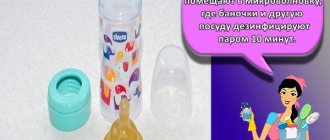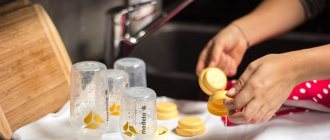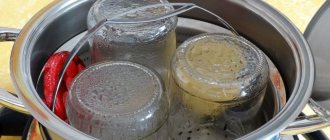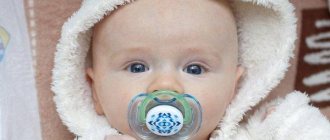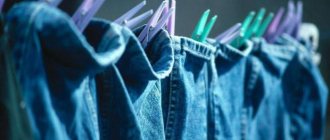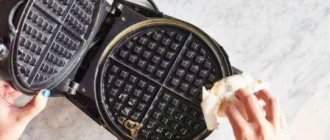With the birth of a long-awaited baby, the hassle of caring for him increases every day. Mothers try to protect their children from all kinds of bacteria and microbes that can harm the baby. It is especially important to monitor the hygiene of the baby and its accessories during feeding. The child learns the whole world first through tactile sensations, then visual, and of course, through nutrition, which reveals to him many new and unknown tastes. In order to avoid negative aspects associated with intestinal infections in children, we will talk today about the need and sequence of how to sterilize bottles for newborns.
The first thing a baby encounters in his life is the most delicious mother’s milk. However, if for some reason it is not available, the child can happily try feeding from a bottle. During the transition to artificial feeding, it is very important to choose a suitable milk formula or dairy-free porridge for the first complementary feeding. It is important to choose a high-quality bottle and pacifier that matches the age and needs of the baby.
Popular methods
The most commonly used method is processing in boiling water.
The most popular method is boiling. However, modern mothers use various methods for this, including processing dishes in a slow cooker or microwave. Special sterilizers are often used; the devices are highly effective, but require additional costs. Each of the proposed options has its own strengths and weaknesses, so mothers are faced with a choice.
Using a sterilizer
A special device is sold in a children's store. Designed for disinfection of baby dishes and accessories (pacifiers, rattles, rodents). You just need to put items there and select the right mode
But it is very important to let the products cool down after switching off, otherwise you may doom the child. The sterilizer has a number of advantages:
- There are several containers inside, this allows you to sterilize plastic or glass products of various sizes.
- The procedure lasts no more than 10 minutes.
- Safe for silicone pacifiers and heat-resistant plastics.
Boiling
The disinfection procedure with boiling water is carried out only with glass containers.
A proven method that does not require additional costs. But it can only be done with glass bottles; plastic bottles can melt and change shape, and after that it will be impossible to use. You can boil silicone pacifiers, but you need to control the time. During boiling, you should follow the following diagram:
- Place the dishes in the pan and add water to cover the bottles.
- Turn on medium heat and bring to a boil.
- Boil for 6-10 minutes, if these are silicone things - no more than 3.
- Remove, place on a clean surface, and let cool slightly.
Microwave
The method is suitable for plastic and glass objects, but metal objects are prohibited. It only takes 5 minutes to sterilize feeding bottles in the microwave. It is worth filling the dishes with water, placing them on the stand and turning them on to maximum mode. Some mothers do not use water. In this case, it will not be possible to sterilize silicone or rubber items for newborns in the microwave; they will deform and melt.
Multicooker and steamer
This culinary gadget can easily replace an expensive sterilizer.
Modern kitchen appliances are actively used in all areas of a woman’s life. You can boil baby dishes in it using the steam cooking function. You need to act according to the following scheme:
- Place the dishes in a steamer in a special container.
- Pour in some water.
- Turn on the device for 8-10 minutes.
Basic methods for disinfecting dishes for newborns
There are many ways to sterilize baby bottles at home. Most of them involve high temperature exposure. These include:
- boiling;
- using a microwave oven, slow cooker or double boiler;
- using an electric sterilizer.
An alternative method of cold sterilization includes the use of antiseptic tablets.
Parents themselves choose how long they will process the dishes, as well as the most convenient and effective disinfection method
Boiling. It is the most easily accessible and widespread method of disinfection, which does not require additional financial investments. Our grandmothers also knew how to boil a bottle for a newborn. Dishes for children are placed in a saucepan, filled with water, and placed on the stove. Water should cover all elements for sterilization by about 5 cm. After the water has been brought to a boil, the bottles are left in boiling water for another 10 minutes, then taken out and placed on a dryer or a clean, dry towel.
Baby nipples and pacifiers are sterilized in the same way, but in a separate pan for about 3 minutes. The disadvantages of this method include large time costs, the possibility of burning and deformation of the dishes.
Microwave. Sterilizing baby bottles in the microwave is an affordable way to disinfect. Place all the utensils in a special container (this can be a sterilizer for microwave ovens or a regular glass or plastic container), pour in a little water and close the lid if using a regular container. To sterilize bottles in the microwave, 7-10 minutes of operation in standard mode is enough.
If a sterilizer is used, then a little filtered cold water is poured into the container, pre-cleaned bottles and nipples are lowered to the bottom of the stand, neck down, covered with a lid and placed in the microwave for 2-6 minutes, depending on the power of the microwave oven.
https://youtube.com/watch?v=WmHdBwcYFck
- Multicooker or steamer. No less convenient and reliable way. Thoroughly washed bottles are placed on a special steam grate, water is poured in and the “steam” mode is turned on for 10 minutes. After cooling, the dishes for newborns can be safely used. Disadvantages of the method: with frequent use, plaque may form inside the devices.
- Electric sterilizer. In the modern world, it is one of the most convenient, but expensive methods. The disinfection process is similar to sterilization in a slow cooker. Dishes for a newborn are placed in the compartments designated for this purpose, water is poured in, and the sterilizer is turned on for approximately 10-15 minutes. As a rule, the device independently regulates the duration of sterilization treatment. Disadvantage: high energy consumption.
- Antiseptic tablets. They are used at home and are especially convenient when traveling. Their use does not cause any big problems. The required amount of disinfectant is dissolved in a container with cold water. Then dishes, pacifiers, pacifiers are placed there, and the container is covered with a lid. You need to sterilize for at least half an hour, then all items are removed and washed with boiled water. Cons: specific smell after disinfection.
The choice of one or another disinfection method directly depends not only on time costs and ease of use, but also on the material used in the manufacture of dishes for children. The electric sterilizer is suitable for disinfecting both plastic and glass bottles. Boiling is used only for glassware, since glass is the most durable and reliable material. Dishes made from low-quality plastic are subject to deformation, may melt, and often emit an unpleasant “chemical” smell.
The bottles have a great advantage over children's dishes from other companies: they do not contain the toxic substance bisphenol-A, they can be boiled, and such dishes do not lose their properties when used for a long time.
Why sterilize bottles?
At the same time, some mothers do not take this issue seriously, believing that a child crawling on the floor and constantly putting his hands in his mouth cannot be protected from germs by sterilizing bottles.
Prevention of infections
However, pediatricians remind that children in the first year of life are especially susceptible to bacterial, viral and parasitic infections, which can cause various diseases. And stomatitis is another one of the most harmless of them (See “Thrush in newborns”). Among the most dangerous is acute intestinal infection, because its consequences are vomiting and diarrhea, which lead to dehydration, which is very dangerous for an infant.
Pathogenic microbes multiply quickly in the remains of the milk formula, since it serves as a good breeding ground for them. At a time when sterilization was not yet used so widely, many infants were sick and died from all kinds of infections.
Of course, it is impossible and not necessary to completely protect a child. However, a baby whose body is not yet strong and does not produce sufficient quantities of its own antibodies should be protected.
https://youtube.com/watch?v=UB9wbfkLArc
Causes
Due to the high susceptibility of the child’s body to various infections (in particular, pathogens of intestinal infections), parents should carefully ensure that all utensils for feeding the baby are clean, since pathogenic bacteria develop very actively in milk.
Sterilization helps to clean bottles and other utensils from microorganisms and thereby protect the baby during the period when his immune system is still developing and does not protect the baby at full strength. It is also important to dry all sterilized items, since microbes also multiply quite quickly in the moisture remaining inside the dishes.
Bottle sterilization
Sterilization is a set of measures aimed at the complete destruction of all types of microorganisms.
Until recently, it was believed that newborn bottles should be sterilized before each use, and by 6 months the frequency of sterilizations could be reduced.
However, modern pediatricians say that it is necessary to sterilize a child’s dishes only before the first use or after a long break in use.
Sterilization is carried out using:
- boiling;
- steam treatment;
- special sterilizer;
- multicookers or steamers;
- microwave;
- special means (tablets, solutions).
To sterilize by boiling, place baby dishes in a pan of filtered water and boil for 5-7 minutes. Then it is taken out with tongs, laid out on a clean towel and allowed to dry thoroughly.
Rubber nipples quickly deteriorate after such sterilization; silicone nipples are more durable in this regard.
Sometimes the bottles are held above the steam rising from a kettle or saucepan. Some parents pour water into the bowl of a multicooker or steamer, and place the dishes in a special compartment above the bowl. This method is considered more gentle than boiling.
If sterilization is carried out regularly, then it is more advisable to purchase a special sterilizer.
Water is poured into it, and several bottles are placed into the container at once.
To sterilize, some parents immerse the dishes in a glass bowl of water and microwave them for a few minutes.
There are also special reusable bags on sale where water is poured and bottles are placed. After this, the bag is sealed and placed in the microwave.
Only dishes that do not contain metal parts can be sterilized in the microwave.
Sometimes, in the absence of the possibility of boiling or using a sterilizer, microwave or multicooker, parents use special solutions and tablets. Pour water into a bowl, dissolve the product and immerse the bottles for half an hour.
Antiseptic tablets
The last sterilization method is the use of chemicals. Disinfectant solutions and tablets that are diluted in water thoroughly clean all feeding equipment.
Antiseptic tablets are placed in water and kept in solution for 30 minutes. There is no need to rinse anything.
After finishing the procedure, put the dishes to dry. The solution does not need to be washed off; it serves as a barrier between the surface of the container and microbes.
Sterilization is an opportunity to protect a child from infections in infancy. However, you should not get too carried away with this procedure. It is useful for the baby to contact the outside world and microbes.
Sterilization methods
There are several ways to disinfect baby bottles:
- Boiling.
- Microwave.
- Steam sterilization.
- Cold sterilization.
Boiling
The most accessible and economical way. Pour the required amount of water into a large saucepan. The volume of water under which the container prepared for sterilization will be hidden is considered necessary. Pre-disassembled and washed feeding dishes are immersed in water and boiled for at least 10 minutes. We’ll look at how and what to wash dishes before sterilizing a little later.
The main inconvenience of boiling is the inability to process several feeding items at once. If you take a very large pan and try to boil several bottles at once, the disinfection process becomes very lengthy.
Microwave
The process of sterilizing plastic bottles for children in a special tank at maximum microwave power
Microwaves can also be used to treat food and drink utensils for newborns. There are two methods of microwave processing:
- Rapid boiling. Pre-prepared dishes are placed in a container of water and boiled in a microwave at high power. 5 - 7 minutes are enough to completely disinfect dishes in this way. The main disadvantage, as with regular boiling, is the small amount of dishes that can be processed at a time. The advantage over conventional boiling is that it takes less time.
- Steam treatment. Steam treatment in a microwave oven is possible using special bags or a sterilizer designed for this. Microwave sterilization packages can be purchased at children's stores or pharmacies. Dishes ready for processing are placed in a bag that is tightly closed and placed in the microwave for no more than 10 minutes. In this case, the microwave operates at full power. There are also microwave sterilizers designed to process several items at once. Compact devices that hold up to 6 bottles are equipped with a reservoir in which you can store disinfected glassware for 24 hours. The downside of this sterilizer is that it can process bottles with a volume of no more than 330 ml.
Steam sterilization
Steaming dishes for feeding children is possible in several ways.
- Steamer or multicooker. The processing principle is exactly the same. The prepared dishes are placed on a wire rack placed in the appliance. In the selected device, a special tank is filled with water, above which a grate with the objects being processed is located. The appropriate mode is turned on: “steaming” - 10 - 15 minutes; “sterilization”, if any, 5 - 7 minutes.
- Electric sterilizers. Designed specifically for disinfecting baby dishes using steam, and can also be equipped with a function for heating baby food. The advantages of such devices are, despite their external compactness, ease of use and the ability to process a large number of items at once. Also, sterilizers operating from the network are equipped with a timer that notifies the end of the processing process. Containers left in the sterilizer after disinfection remain sterile for 5 hours.
Cold sterilization
Cold sterilization involves the impact of chemicals on the containers being processed. The chemicals used for cold sterilization are completely safe for children, but after treatment, the dishes may have a specific odor. The usual rinsing of dishes with boiling water after the processing process will help get rid of possible odors.
For sterilization without steam and boiling, you need a large container with a lid and specially purchased tablets or granules for dissolving in cold water. The tablets contain drugs intended for antiseptic treatment.
- Add the tablets to a container of cold water until completely dissolved.
- Then the dishes prepared for disinfection are immersed in the resulting solution. Dishes placed in a container with sterilizing solution must be completely hidden by it.
- This solution can be used repeatedly during the day by placing new dishes in it for 30 minutes.
- Also, already treated dishes can be stored in this solution for 24 hours.
This method is very convenient in conditions where there is no electricity or the ability to use electrical appliances: maternity hospital, country house, travel.
Any sterilization of utensils for feeding babies, as well as other accessories, such as pacifiers or teethers, is available at home. There is no need to worry about the health of the child, having the ability to disinfect at any time.
Use of technical means
If possible, bottles are sterilized using an electrical device. The containers must be disassembled before installation. Then water is poured into the container. Depending on the degree of contamination, it is necessary to select the required operating mode. Unlike sterilizing bottles in the microwave, the procedure here takes about 9-15 minutes.
In the last few years, antiseptic tablets have gained popularity. It is very convenient that you can take them with you on the road. These tablets allow you to quickly restore the cleanliness of bottles and pacifiers. You can find them at the pharmacy. To prepare a special solution, you must do the following:
- take a container with a volume of at least two liters;
- add boiled water;
- throw 2 tablets;
- wait until they completely dissolve;
- place the container in the resulting solution;
- sterilization time is about 30 minutes;
- The process is completed by rinsing under running boiled water.
Sterile cleanliness
And now - more about what helps to disinfect children's utensils at home, removes plaque and odor:
- How to boil bottles? Place them in a saucepan (it's best to boil baby bottles in a separate one designed just for this purpose), add enough water to completely cover the bottles, and bring to a boil. How long to boil feeding bottles depends on the number of bottles. As a rule, this takes from three to ten minutes.
- It is very convenient to sterilize feeding bottles using a sterilizer, placing them neck down and tightly closing the lid. After 10-15 minutes, the sterilizer must be turned off and the sterilized items removed after it has cooled completely. While in the container, the dishes remain disinfected for six hours.
- A few words about how to sterilize baby bottles in the microwave. There is also a special sterilizer for this, but sterilizing bottles in the microwave is possible without it. To sterilize bottles in the microwave, you need to put them in a deep container made of heat-resistant glass, pour a little water into it, and turn on the device at maximum mode. After 5-7 minutes, sterilization of baby bottles in the microwave is completed.
However, before sterilizing bottles in the microwave, you need to remove the nipples and unscrew the metal caps.
- How to sterilize bottles in a slow cooker? Sterilization of baby bottles in a multicooker is carried out disassembled, without nipples. They are placed on the grill, water (1 l) is poured into the bowl and the “steam” mode is turned on. According to reviews from mothers, sterilizing bottles in a slow cooker is quick, convenient and safe.
- It's as easy as sterilizing the bottles in a steamer. Pour water into it, place the bottles with their necks down and turn on the unit for a quarter of an hour.
Here's what experienced mothers say about how to boil children's dishes.
Olga. Yes, a sterilizer is a great helper, the main thing is to choose the right one. “Chicco” suited us: spacious, durable and inexpensive, turned on and off with one button.
It is important not only to wash and sterilize correctly. Not everyone knows that containers cannot be wiped after this.
Process steps
To prepare for sterilization of baby dishes, first of all, you need to know how to wash bottles correctly, clearing them of milk residues. For this, both special gels for children's dishes and accessories, as well as ordinary soda and laundry soap, can be used, which will protect your baby from allergies and detergent residues. The process of washing and sterilization should be done daily, before each feeding. Having plastic bottles in use, you need to make sure whether you can boil them at home, or whether this requires a sterilizer.
- Rinse the bottle with running water.
- Add a very small drop of cleaning agent to the brush and thoroughly clean all surfaces of the children's dishes. We pay special attention to the bottom and neck of the bottle, where most of the milk residue accumulates. You can also allocate a separate sponge for baby bottles and change it periodically.
- Using a small brush or sponge, we wash small parts of baby dishes, such as nipples, lids and rings. We also wash the pacifiers, carefully, without collecting foam in them.
- Rinse all accessories well with running water.
- Place bottles and nipples in a container for sterilization.
- After the procedure, children's dishes must be thoroughly dried.
Preparations for further use of sterilized items have been completed.
You should determine in advance how to properly boil and sterilize nipples and bottles made of plastic or glass.
General rules for boiling bottles and pacifiers
Let's look at how to properly boil baby bottles. To do this, you should select a separate pan, which will no longer be used for other purposes. You need to remove the nipples and caps from the bottles, and thoroughly wash the remaining milk under the tap. Then immerse the items in a saucepan along with pacifiers, fill with cold water, and turn on the gas. Don't wait until the water boils. After boiling, remove the items with tongs and place them upside down on a clean towel, without wiping anything.
How long should you boil?
If you don’t know how long to boil feeding bottles, then everything is simple: after boiling, hold the items for an average of 5 to 7 minutes. The nipples can be boiled for no more than 2-3 minutes, otherwise they will quickly become unusable.
How to boil new bottles?
If the child is not yet one year old, then after purchasing a new bottle or pacifier, they must be sterilized for 3-5 minutes. But how to boil bottles for a one-year-old child? After a year, it is enough to wash new dishes with soda and laundry soap, pour boiling water over them and leave for 10 minutes, remove and dry.
Few people know that cheap plastic bottles are not intended for boiling. High temperatures cause the plastic to lose its protective layer and release toxins, which then end up in the milk formula. A baby who eats from such a bottle may experience poisoning, vomiting or diarrhea.
Until what age and how should a baby boil bottles?
Many mothers wonder at what age a child should boil bottles. Experts' opinions differ here. Some advise boiling baby dishes up to 6 months, while others recommend sterilizing bottles and pacifiers up to 1.5 years.
If the baby is a newborn, then you need to boil the dishes after each feeding until the baby is one month old. This is explained by the fact that the baby still has a weak immune system, and poorly washed milk residues in the bottle contribute to the proliferation of pathogenic bacteria that can cause poisoning. Therefore, regular washing is not enough. After a month, it is allowed to sterilize dishes once a day, for six-month-old babies - once a week.
Dilution of formula for newborns
Preparing food for a baby is an important process. You need to know how to prepare formula for a newborn so that your baby receives healthy and tasty food every day that will help him grow and develop.
Proper dilution of formula
To feed your baby high-quality nutrition, you need to buy a good formula that is suitable for his age and other indications. For example, for the little ones, Similak Premium, Nan, Nestozhen and other brands received good ratings from doctors and parents.
Before diluting formula for newborns, you need to purchase bottled water intended for children. It contains a minimal amount of microelements that can overload the child’s kidneys; such water does not need to be boiled. If bottled water is not available, you can use filtered tap water, but be sure to boil it first.
Breeding formula
Infant formula is valuable and healthy for the baby if it is prepared exactly according to the included instructions. They indicate how to properly dilute infant formula and also contain other necessary information.
What to pay attention to:
- The proportions of powder and water are most important for a child. The box with the product always indicates how many scoops of powder need to be diluted in a certain amount of water, the age of the baby, as well as the number of servings per day;
Important! Preparing a mixture that is too thick or too watery can harm your baby. The baby’s digestive system may not be able to cope with the increased amount of microelements and protein in one serving.
If you dilute the powder with too much water, the child will not get enough food.
If the manufacturer indicates that the mixture is suitable for consumption within 4 weeks after opening the package, then after this period it must be thrown away; The child grows, so the amount of food gradually increases. If at 6 months of age he needs to drink 180 ml of the mixture, then after 2 months he will drink 210 ml. When diluting more food, the proportions of water and mixture are maintained; Breeding technique. You need to dilute the powder by adding it to a bottle filled with water, and not vice versa, adding liquid to the powder
Then carefully shake the bottle until the mixture is completely dissolved. Vigorous shaking will lead to foaming of the milk; It is important to familiarize yourself with information about the temperature of the water used. If it is too cold, the powder will not dissolve and forms lumps.
Mixture temperature
To make eating effective and comfortable, you need to know what temperature the formula should be for feeding a newborn.
Important! Mixing the powder with boiling water destroys the valuable vitamins and nutrients contained in the mixture. To ensure that the product formula retains its properties, it should not be prepared at high temperatures.
The best formula temperature for feeding a newborn is 36-38°C. The product is usually prepared at a temperature of about 40°C. It is preferable not to provide food for a newborn in advance, but to prepare it right before use. It is also forbidden to leave uneaten milk for a later date - dangerous pathogenic microorganisms can form in food that has come into contact with the baby’s saliva.
Algorithm for bottle feeding a baby:
- Dilute the required amount of mixture in a clean bottle. Sometimes it is necessary to pour in breast milk, which must first be expressed;
- Install the nipple and make sure that the milk does not flow out in too frequent drops;
- Measure the temperature of the milk by applying a couple of drops to the skin of your wrist;
- Give the bottle to the child in your arms. In this case, it should be held at approximately an angle of 45°;
Feeding a baby from a bottle
- When the baby has finished eating, lift him upright and maintain in this position for about 5 minutes. This will allow air to escape if the baby burps, and food will not enter the respiratory system.
It is beneficial for the child to come into contact with the outside world and bacteria. This way his body will learn to produce antibodies. Sterile bottles and pacifiers do not weaken the newborn’s immunity, but only protect his digestive system from E. coli and other microbes. While the child is small and weak, it is better not to take risks and regularly sterilize baby feeding equipment and pacifiers.
Sterilizing bottles at home
The baby's immune system is not yet fully developed, and simply washing objects that come into direct contact with her mouth is not enough. Sterilization will help prevent the penetration of microbes that can cause nausea, vomiting, diarrhea, and abdominal pain into the baby’s body.
Before you start sterilizing baby bottles, you need to prepare them. The preparation process includes the following:
- Pre-rinse in running water;
- Rinse with warm water and a mild detergent and clean the inner surface with a special brush. If the milk residue is greasy or difficult to remove, water may not do the job.
Preparing for sterilization
Important! It is better to use a special liquid for washing children's dishes or baking soda
- Rinse thoroughly using several waters. The foam from the detergent must be completely removed.
On sale you can find bottles made of glass and plastic. Both types can be washed without problems, but glass ones are better sterilized. Plastic ones are not so resistant to temperature influences; they can become deformed. The most dangerous thing is that plastic from unscrupulous manufacturers can release harmful substances that end up in the baby’s diet.
Important! If nipples or bottles show signs of damage, they cannot be continued to be used, as dangerous microorganisms get into small cracks and are not removed by washing. In a home or apartment, you can sterilize bottles and other children's items in different ways.
Each mother determines the optimal method for herself.
In a home or apartment, you can sterilize bottles and other children's items in different ways. Each mother determines the optimal method for herself.
Sterilization can be performed by physical or chemical methods. At home, the former are more often used. Basically we are talking about thermal sterilization - exposure to high-temperature steam or boiling water.
1Useful tips
There are a number of useful tips that mothers should heed to make caring for their baby easier:
- There are hardly many mothers who enjoy spending their precious free time washing children’s cutlery and bottles, which is why you need to remember that fresh porridge and baby food left on the walls can be washed off with warm water much easier than dried ones. residues on the bottle, so don’t be lazy and spend just a couple of minutes to rinse the porridge bottle with warm water.
- Sterilization of bottles must be carried out without fail, because this is the main component of protecting the baby’s immunity, which is quite weak during breastfeeding.
- Before sterilizing dishes or containers, you need to wash them thoroughly so that no trace of dirt, food, etc. remains on their surface.
- You should not get hung up on one method of sterilization. There are actually several of them, and it's worth trying each of them to see which bottle sterilization method is right for you.
- Not only the baby’s bottles, but also all his equipment, dishes, syringes, as well as the mother’s breast pump should be sterilized.
- Those microbes that are completely harmless for an adult are very dangerous for the baby’s immunity, which is why every device must be disinfected, and the easiest way to do this is by sterilization.
I would like to immediately note that the easiest way is to buy a special device - a sterilizer, the main function of which is to disinfect children's dishes. For those who know only one method of sterilizing baby bottles, we present to your attention a whole list of methods that are relevant and all effective.
Preparing for sterilization
If parents decide that bottle sterilization is still necessary, it is useful to find out how to properly disinfect devices at home. You also need to wash baby bottles correctly, following the algorithm. You cannot postpone this event until later, because the remaining mixture will stick and will not be easy to remove. And if there was soup in it, the container will become greasy, and it will be even more difficult to deal with contamination. The algorithm for initial processing is simple:
- the bottle is untwisted, the nipple and cap are separated;
- remove food residues;
- the container with all components is washed under running water at room temperature;
- then the bottle is washed in hot water using detergent for baby dishes, special soap or baking soda; A brush helps to reach the bottom and process it efficiently, which should be separate and intended only for washing bottles;
- the thread must be cleaned using a special brush; the pacifier is treated using the same products and tools;
- All elements of the bottle are washed under running water and laid out to dry.
Manufacturers of detergents for children's dishes claim that their product is completely safe for infants. But with newborns it’s better not to take risks. For the first months, wash dishes using harmless soda powder.
There are conflicting opinions about processing children's dishes in the dishwasher. You can use such a device to clean a newborn’s bottle only if such a function is provided by the manufacturer.
It is important to have not one, but two or three bottles in use. If one container loses its properties (the lid is deformed, the plastic can absorb food odors when using the container for complementary feeding), the baby will not remain hungry
In addition, this will allow you to use each element less often, which allows you to extend its service life. In addition to bottles, pacifiers, rings and teethers, and rubber toys that the child puts into his mouth are also sterilized.
The brush, sponge and brushes for caring for baby bottles also require care. It is recommended to change such products every 2-3 months.
Using a multicooker
Sterilization of bottles for newborns at home is carried out as follows. Water is poured into the multicooker pan and dishes, and the soup or porridge mode is turned on, and sometimes stewing.
Using the second method, you can treat plastic bottles, pacifiers and pacifiers:
- pour 400-600 ml of water into the multicooker;
- install the grid;
- Bottles are placed on it with the neck down;
- turn on the appropriate mode.
If the dishes cannot be placed standing, then they are laid sideways. It takes 20-30 minutes to process it.
